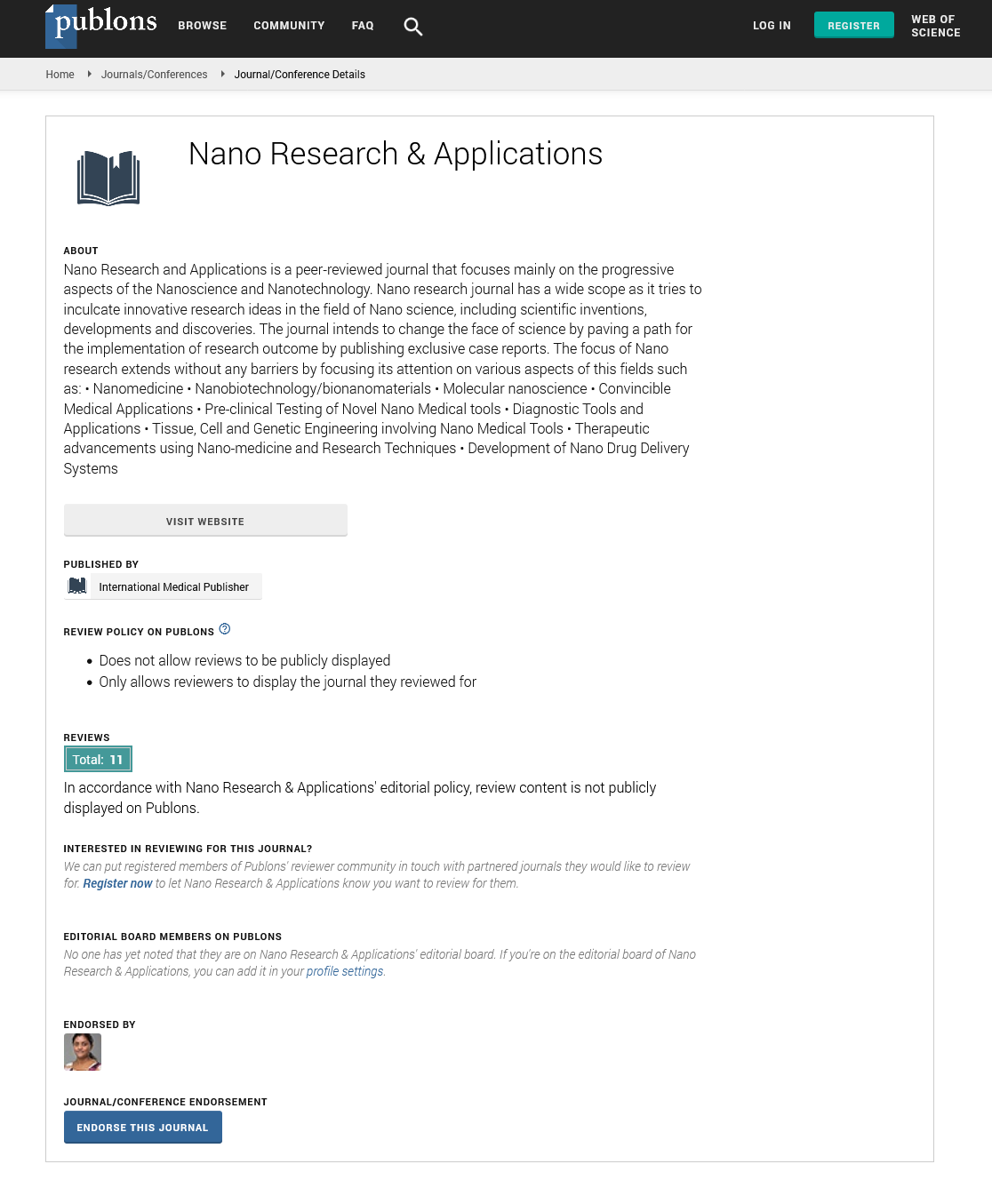ISSN : 2471-9838
Nano Research & Applications
Multiscale modeling framework for nanoparticles, nanomaterials and nanotechnology
Joint Event on 26th International Conference on Advanced Nanotechnology & 2nd Edition of International Conference on Materials Technology and Manufacturing Innovations
October 04-05, 2018 Moscow, Russia
Andriy Kovalenko
University of Alberta, Canada
Keynote: Nano Res Appl
DOI: 10.21767/2471-9838-C5-019
Abstract
Molecular theory of solvation for nanostructures in both aqueous and non-aqueous solution, a.k.a. three-dimensional reference interaction site model (3D-RISM) with Kovalenko-Hirata (KH) closure relation, was systematically developed and applied to a variety of compounds, supramolecules and biomolecules in a number of solvents, mixtures, electrolyte and non-electrolyte solutions. From the first principles of statistical mechanics, 3D-RISM-KH theory predicts solvation structure and thermodynamics of nanochemical and biomolecular systems, including their analytical long-range asymptotics. It yields high accuracy, efficiency, and applicability by multiscale coupling of methods at different space and time scales to provide fundamental understanding and prediction for nanomaterials and biomolecules. The method has been coupled with quantum chemistry, molecular dynamics and dissipative particle dynamics. Examples include helical rosette nanotubes with tunable stability and hierarchy, water promoted supramolecular chirality inversion, formation and stability of self-assembling supramolecular structures of organic rosette nanotubes with ordered shells of inner and outer water, aromatic hydrocarbons in kaolinite solutions, and accurate and efficient dissipative particle dynamics of polymer chains with coarse-grained effective pair potential obtained from DRISM-KH theory. Multi-Time-Step molecular dynamics with optimized isokinetic nose-hoover (OIN) thermostat coupled with 3D-RISM-KH molecular theory of solvation and generalized solvation force extrapolation (MTS-MD/OIN/3D-RISM-KH/GSFE) provides quasidynamics description of biomolecules. Validation included folding of miniprotein in solution from fully extended to equilibrated state in 60 ns, which provides acceleration by two orders of magnitude time scale, compared to 4–9 μs protein folding in experiment. Recent applications of 3D-RISM-KH molecular solvation theory consist in multiscale coupling of quantum chemistry, molecular solvation theory, molecular dynamics, and dissipative particle dynamics. Recent Publications 1. Kovalenko, A. In: Molecular Theory of Solvation. Hirata, F. (Ed.) Series: Understanding Chemical Reactivity, Kluwer, Dordrecht, 2003, Vol. 24, pp.169–275. 2. Kovalenko, A. Multiscale Modeling of Solvation. In: Springer Handbook of Electrochemical Energy, pp. 95-139. Breitkopf, C.; Swider-Lyons, K. (Eds.) Springer-Verlag Berlin Heidelberg, 2017, 1016p. 3. Gusarov, S.; Ziegler, T.; Kovalenko, A. J. Phys. Chem. A, 2006, 110, 6083. 4. Casanova, D.; Gusarov, S.; Kovalenko, A.; Ziegler, T. J. Chem. Theory Comput., 2007, 3, 458. 5. Kaminski, J.W.; Gusarov, S.; Wesolowski, T.A.; Kovalenko, A. J. Phys. Chem. A, 2010, 114, 6082. 6. Malvaldi, M.; Bruzzone, S.; Chiappe, C.; Gusarov, S.; Kovalenko, A. J. Phys. Chem. B, 2009, 113, 3536.
Biography
Andriy Kovalenko is Senior Research Officer at the National Institute for Nanotechnology, and Adjunct Professor in the Department of Mechanical Engineering at the University of Alberta, Edmonton, Canada. He has completed his PhD in Theoretical and Mathematical Physics at Lviv State University, Bogolyubov’s Institute in 1993. He has been developing methodology and software implementation of statistical-mechanical, molecular theory of solvation, coupling it with electronic structure theories, molecular simulations, and docking protocols in a platform of predictive multiscale theory and modeling of chemical, supramolecular, and biomolecular systems for new advances of a general framework of multiscale methods.
E-mail: andriyk@ualberta.ca
Google Scholar citation report
Citations : 387
Nano Research & Applications received 387 citations as per Google Scholar report
Nano Research & Applications peer review process verified at publons
Abstracted/Indexed in
- Google Scholar
- China National Knowledge Infrastructure (CNKI)
- Directory of Research Journal Indexing (DRJI)
- WorldCat
- Publons
- Secret Search Engine Labs
- Euro Pub
Open Access Journals
- Aquaculture & Veterinary Science
- Chemistry & Chemical Sciences
- Clinical Sciences
- Engineering
- General Science
- Genetics & Molecular Biology
- Health Care & Nursing
- Immunology & Microbiology
- Materials Science
- Mathematics & Physics
- Medical Sciences
- Neurology & Psychiatry
- Oncology & Cancer Science
- Pharmaceutical Sciences
